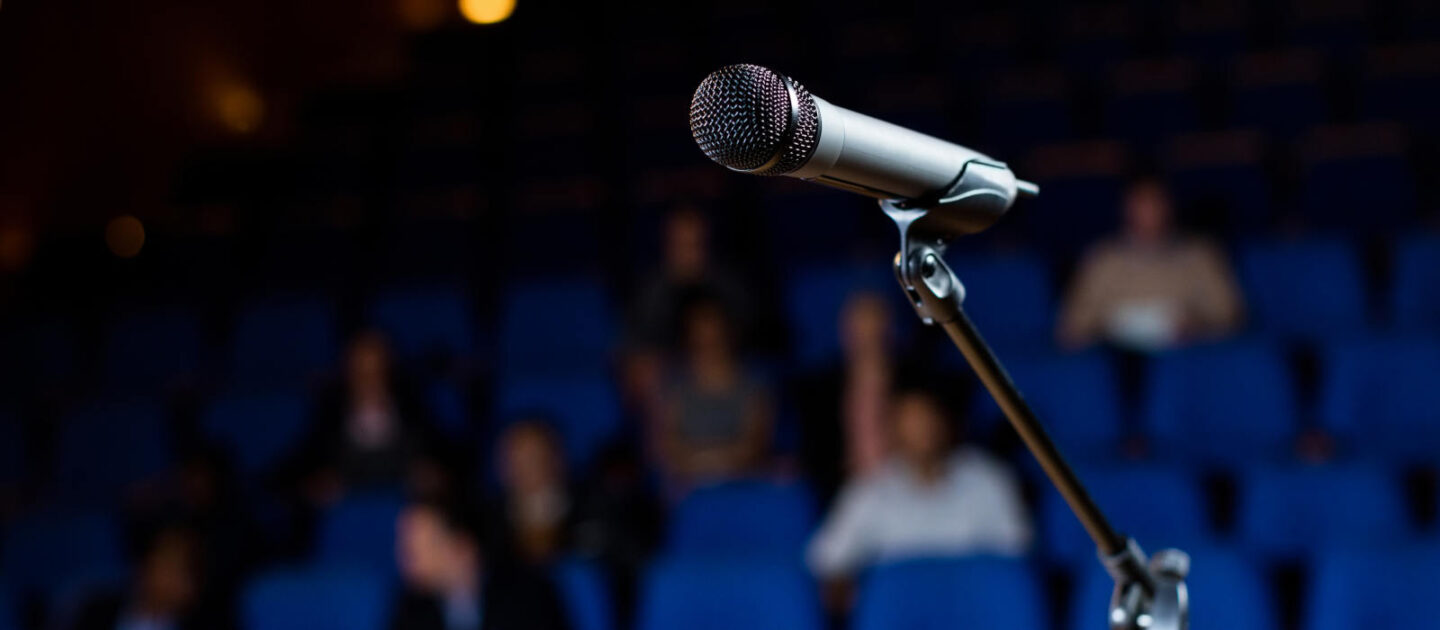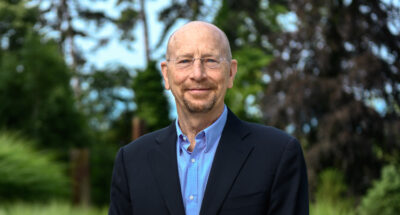
“We were so scared of our IPO”: Leaders Unplugged with former On-CEO Marc Maurer
Marc Maurer shares how ON grew from startup to IPO by defying hype, focusing on purpose, and leading with humility in this candid Leaders Unplugged episode....
by Susan Goldsworthy Published May 14, 2024 in Leadership • 5 min read
As conference season unfolds, preparation, active listening, and adaptability are the guiding principles for anyone hoping to master the art of moderation. With a cacophony of voices and a deluge of ideas, the task of spearheading a panel while ensuring audience engagement can be daunting. But these essential strategies for mastering the art of moderation can create dynamic forums of exchange and exploration.

The secret to great panel moderation is meticulous preparation – something that is often overlooked. You cannot just turn up and hope for the best. Before stepping onto the stage, think about what you want the audience to think, feel, and do from the interaction and work back from there.
It’s also important to thoroughly research the topic. While the panelists are the true experts, you will need a firm grasp of the fundamentals of the subject matter if you’re to orchestrate the discussion adeptly.
Understanding who the panelists are, their unique viewpoints, and the current discourse surrounding the topic is also paramount. Look at it from a systematic viewpoint and consider all the different perspectives. Your job is to find the angles that panelists may not have been asked, or even thought about being asked.
The key to that is to hold a pre-panel online meeting, which will also help to foster familiarity among the speakers. This personal touch enhances cohesion and creates a psychologically safe environment for all involved. It also helps to establish the ground rules. For instance, the four-sentence rule – encouraging panelists to limit their contributions to roughly four sentences at a time before allowing others to speak – can help ensure equitable participation and prevent the discussion from being monopolized

“Moderators must exercise tact and respect when redirecting the focus of the discourse.”
A potentially awkward moment for a moderator is when they must cut someone off, either because they’re rambling, or you need to give someone else the opportunity to speak. Interruptions are an inevitable aspect of panel discussions, but how they’re managed can make or break the flow of conversation. Moderators must exercise tact and respect when redirecting the focus of the discourse.
One trick is to use someone’s first name to acknowledge their contribution while gently steering the conversation back on track. Sometimes people go off on a tangent. When that happens, you can employ the “deferred exploration” strategy to manage digression without dismissing valuable insights. For example, you could say something like, “That’s an interesting point, Joe. If we have time, let’s return to it later. For now, can you say more about the original topic?” This works because it confirms that what they’re saying is valuable.
Another method would be to say something like, “I appreciate your insights on this, and we could speak about this for hours, but unfortunately we only have 30 minutes, so can I ask you to summarize what you want to say in one sentence?” This summarization technique helps diplomatically guide the discussion back to the central theme while acknowledging the value of divergent perspectives.
With a multitude of voices and ideas flowing, it’s important to balance the need for structure and organization with spontaneity and dynamism.

Healthy conflict and differing opinions are integral to robust discussions. The challenge for moderators is to embrace dissent while fostering a collaborative atmosphere. Encourage panelists to articulate their viewpoints respectfully. You could say something like, “Thanks for the insights you’re sharing, James, and I’d love to hear what Mary has to say about this.” Or you may try, “It’s fabulous that we see this tension, as it’s a sensitive topic that brings up emotions. I’m interested to hear what everyone else has to say about this.”
Moreover, you can actively involve the audience through polling (a simple show of hands can do the trick at in-person gatherings) to broaden the dialogue and reinforce inclusivity. Audience Q&A also works wonders in this regard; at IMD we have microphone balls that we can (literally) throw around the room. This helps to get people more engaged in the discourse and makes them feel as if their views are being taken seriously.
Amid a chorus of voices, it’s going to be imperative to ensure each speaker’s contribution shines. That’s where your preparation comes into play. Take stock of each panelist’s viewpoints ahead of time and try to tease out one of their unique perspectives on the big day. This allows you to orchestrate the conversation skillfully while providing equitable opportunities for participation. By nurturing an environment where every voice is valued, moderators can elevate the collective wisdom of the group.

Active listening should be your North Star. This is a communication technique whereby you fully concentrate on, understand, respond to, and remember what is being said. It involves hearing the words and paying attention to the speaker’s tone, body language, and emotions, to grasp the complete message being conveyed. Active listening is an art because while someone is speaking, other people’s brains are thinking at least four times faster.
Active listening enables moderators to gauge audience engagement and adjust accordingly. You may, for example, need to encourage deeper exploration if a speaker is being too brief. The key to active listening is to be fully present in the moment and focus solely on the speaker without distractions. It also helps to show empathy and acknowledgment by paraphrasing, summarizing, or reflecting on what the speaker has said.
It’s important to note that the art of moderation extends beyond the panel’s duration. Crafting a compelling closure will leave attendees with a sense of fulfillment. To wrap up, you could encourage panelists to share anecdotes and reflections, anchoring key takeaways in memorable narratives. You can also invite audience participation in reflective exercises, fostering a sense of shared learning and connection. Closing with thought-provoking questions helps to cap off the session on a high note.

Affiliate Professor of Leadership, Communications and Organizational Change at IMD
Susan Goldsworthy OLY is an Affiliate Professor of Leadership, Communications and Organizational Change at IMD. Co-author of three award-winning books, she is also an Olympic swimmer. She is a highly qualified executive coach and is trained in numerous psychometric assessments. She is Director of the IMD Executive Coaching Certificate and Program Director of the Leading Sustainable Change program.

17 hours ago • by Alyson Meister, Marc Maurer in Leadership
Marc Maurer shares how ON grew from startup to IPO by defying hype, focusing on purpose, and leading with humility in this candid Leaders Unplugged episode....

July 7, 2025 • by Richard Baldwin in Leadership
The mid-year economic outlook: How to read the first two quarters of Trump...

July 4, 2025 • by Arturo Pasquel in Leadership
Susanne Hundsbæk-Pedersen, Global Head of Pharma Technical Operations at Roche, shares how she has navigated the various pivots in her career, and the importance of curiosity, optimism and energy. ...

July 3, 2025 • by Eric Quintane in Leadership
Entrepreneurial talent who work with other teams often run into trouble with their managers. Here are ways to get the most out of your ‘boundary spanners’...
 Audio available
Audio availableExplore first person business intelligence from top minds curated for a global executive audience